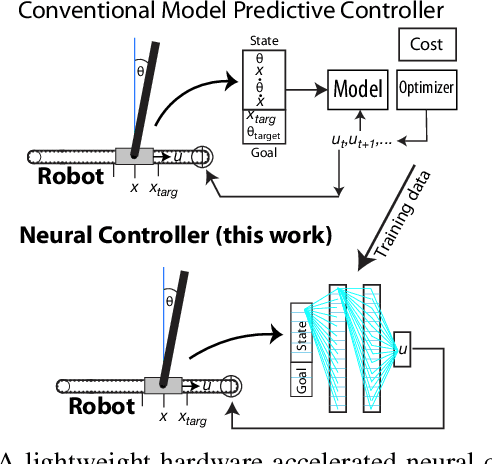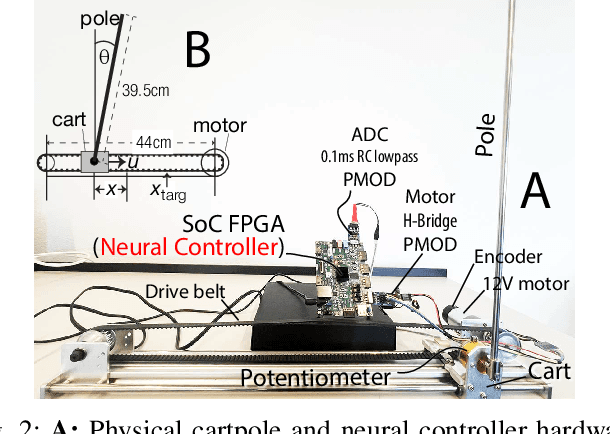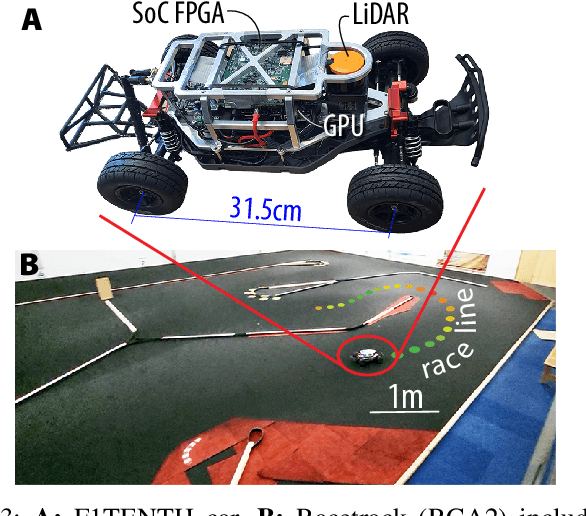Xiang Deng
Mark
Agent-RLVR: Training Software Engineering Agents via Guidance and Environment Rewards
Jun 13, 2025Abstract:Reinforcement Learning from Verifiable Rewards (RLVR) has been widely adopted as the de facto method for enhancing the reasoning capabilities of large language models and has demonstrated notable success in verifiable domains like math and competitive programming tasks. However, the efficacy of RLVR diminishes significantly when applied to agentic environments. These settings, characterized by multi-step, complex problem solving, lead to high failure rates even for frontier LLMs, as the reward landscape is too sparse for effective model training via conventional RLVR. In this work, we introduce Agent-RLVR, a framework that makes RLVR effective in challenging agentic settings, with an initial focus on software engineering tasks. Inspired by human pedagogy, Agent-RLVR introduces agent guidance, a mechanism that actively steers the agent towards successful trajectories by leveraging diverse informational cues. These cues, ranging from high-level strategic plans to dynamic feedback on the agent's errors and environmental interactions, emulate a teacher's guidance, enabling the agent to navigate difficult solution spaces and promotes active self-improvement via additional environment exploration. In the Agent-RLVR training loop, agents first attempt to solve tasks to produce initial trajectories, which are then validated by unit tests and supplemented with agent guidance. Agents then reattempt with guidance, and the agent policy is updated with RLVR based on the rewards of these guided trajectories. Agent-RLVR elevates the pass@1 performance of Qwen-2.5-72B-Instruct from 9.4% to 22.4% on SWE-Bench Verified. We find that our guidance-augmented RLVR data is additionally useful for test-time reward model training, shown by further boosting pass@1 to 27.8%. Agent-RLVR lays the groundwork for training agents with RLVR in complex, real-world environments where conventional RL methods struggle.
STAR: Learning Diverse Robot Skill Abstractions through Rotation-Augmented Vector Quantization
Jun 04, 2025Abstract:Transforming complex actions into discrete skill abstractions has demonstrated strong potential for robotic manipulation. Existing approaches mainly leverage latent variable models, e.g., VQ-VAE, to learn skill abstractions through learned vectors (codebooks), while they suffer from codebook collapse and modeling the causal relationship between learned skills. To address these limitations, we present \textbf{S}kill \textbf{T}raining with \textbf{A}ugmented \textbf{R}otation (\textbf{STAR}), a framework that advances both skill learning and composition to complete complex behaviors. Specifically, to prevent codebook collapse, we devise rotation-augmented residual skill quantization (RaRSQ). It encodes relative angles between encoder outputs into the gradient flow by rotation-based gradient mechanism. Points within the same skill code are forced to be either pushed apart or pulled closer together depending on gradient directions. Further, to capture the causal relationship between skills, we present causal skill transformer (CST) which explicitly models dependencies between skill representations through an autoregressive mechanism for coherent action generation. Extensive experiments demonstrate the superiority of STAR on both LIBERO benchmark and realworld tasks, with around 12\% improvement over the baselines.
* Accepted by ICML 2025 Spotlight
Few-Shot Vision-Language Action-Incremental Policy Learning
Apr 22, 2025Abstract:Recently, Transformer-based robotic manipulation methods utilize multi-view spatial representations and language instructions to learn robot motion trajectories by leveraging numerous robot demonstrations. However, the collection of robot data is extremely challenging, and existing methods lack the capability for continuous learning on new tasks with only a few demonstrations. In this paper, we formulate these challenges as the Few-Shot Action-Incremental Learning (FSAIL) task, and accordingly design a Task-prOmpt graPh evolutIon poliCy (TOPIC) to address these issues. Specifically, to address the data scarcity issue in robotic imitation learning, TOPIC learns Task-Specific Prompts (TSP) through the deep interaction of multi-modal information within few-shot demonstrations, thereby effectively extracting the task-specific discriminative information. On the other hand, to enhance the capability for continual learning on new tasks and mitigate the issue of catastrophic forgetting, TOPIC adopts a Continuous Evolution Strategy (CES). CES leverages the intrinsic relationships between tasks to construct a task relation graph, which effectively facilitates the adaptation of new tasks by reusing skills learned from previous tasks. TOPIC pioneers few-shot continual learning in the robotic manipulation task, and extensive experimental results demonstrate that TOPIC outperforms state-of-the-art baselines by over 26$\%$ in success rate, significantly enhancing the continual learning capabilities of existing Transformer-based policies.
Graph-based Diffusion Model for Collaborative Filtering
Apr 07, 2025Abstract:Recently, diffusion-based recommendation methods have achieved impressive results. However, existing approaches predominantly treat each user's historical interactions as independent training samples, overlooking the potential of higher-order collaborative signals between users and items. Such signals, which encapsulate richer and more nuanced relationships, can be naturally captured using graph-based data structures. To address this limitation, we extend diffusion-based recommendation methods to the graph domain by directly modeling user-item bipartite graphs with diffusion models. This enables better modeling of the higher-order connectivity inherent in complex interaction dynamics. However, this extension introduces two primary challenges: (1) Noise Heterogeneity, where interactions are influenced by various forms of continuous and discrete noise, and (2) Relation Explosion, referring to the high computational costs of processing large-scale graphs. To tackle these challenges, we propose a Graph-based Diffusion Model for Collaborative Filtering (GDMCF). To address noise heterogeneity, we introduce a multi-level noise corruption mechanism that integrates both continuous and discrete noise, effectively simulating real-world interaction complexities. To mitigate relation explosion, we design a user-active guided diffusion process that selectively focuses on the most meaningful edges and active users, reducing inference costs while preserving the graph's topological integrity. Extensive experiments on three benchmark datasets demonstrate that GDMCF consistently outperforms state-of-the-art methods, highlighting its effectiveness in capturing higher-order collaborative signals and improving recommendation performance.
Spatial-Temporal Graph Diffusion Policy with Kinematic Modeling for Bimanual Robotic Manipulation
Mar 13, 2025Abstract:Despite the significant success of imitation learning in robotic manipulation, its application to bimanual tasks remains highly challenging. Existing approaches mainly learn a policy to predict a distant next-best end-effector pose (NBP) and then compute the corresponding joint rotation angles for motion using inverse kinematics. However, they suffer from two important issues: (1) rarely considering the physical robotic structure, which may cause self-collisions or interferences, and (2) overlooking the kinematics constraint, which may result in the predicted poses not conforming to the actual limitations of the robot joints. In this paper, we propose Kinematics enhanced Spatial-TemporAl gRaph Diffuser (KStar Diffuser). Specifically, (1) to incorporate the physical robot structure information into action prediction, KStar Diffuser maintains a dynamic spatial-temporal graph according to the physical bimanual joint motions at continuous timesteps. This dynamic graph serves as the robot-structure condition for denoising the actions; (2) to make the NBP learning objective consistent with kinematics, we introduce the differentiable kinematics to provide the reference for optimizing KStar Diffuser. This module regularizes the policy to predict more reliable and kinematics-aware next end-effector poses. Experimental results show that our method effectively leverages the physical structural information and generates kinematics-aware actions in both simulation and real-world
Embodied Crowd Counting
Mar 11, 2025Abstract:Occlusion is one of the fundamental challenges in crowd counting. In the community, various data-driven approaches have been developed to address this issue, yet their effectiveness is limited. This is mainly because most existing crowd counting datasets on which the methods are trained are based on passive cameras, restricting their ability to fully sense the environment. Recently, embodied navigation methods have shown significant potential in precise object detection in interactive scenes. These methods incorporate active camera settings, holding promise in addressing the fundamental issues in crowd counting. However, most existing methods are designed for indoor navigation, showing unknown performance in analyzing complex object distribution in large scale scenes, such as crowds. Besides, most existing embodied navigation datasets are indoor scenes with limited scale and object quantity, preventing them from being introduced into dense crowd analysis. Based on this, a novel task, Embodied Crowd Counting (ECC), is proposed. We first build up an interactive simulator, Embodied Crowd Counting Dataset (ECCD), which enables large scale scenes and large object quantity. A prior probability distribution that approximates realistic crowd distribution is introduced to generate crowds. Then, a zero-shot navigation method (ZECC) is proposed. This method contains a MLLM driven coarse-to-fine navigation mechanism, enabling active Z-axis exploration, and a normal-line-based crowd distribution analysis method for fine counting. Experimental results against baselines show that the proposed method achieves the best trade-off between counting accuracy and navigation cost.
3D-AffordanceLLM: Harnessing Large Language Models for Open-Vocabulary Affordance Detection in 3D Worlds
Feb 27, 2025Abstract:3D Affordance detection is a challenging problem with broad applications on various robotic tasks. Existing methods typically formulate the detection paradigm as a label-based semantic segmentation task. This paradigm relies on predefined labels and lacks the ability to comprehend complex natural language, resulting in limited generalization in open-world scene. To address these limitations, we reformulate the traditional affordance detection paradigm into \textit{Instruction Reasoning Affordance Segmentation} (IRAS) task. This task is designed to output a affordance mask region given a query reasoning text, which avoids fixed categories of input labels. We accordingly propose the \textit{3D-AffordanceLLM} (3D-ADLLM), a framework designed for reasoning affordance detection in 3D open-scene. Specifically, 3D-ADLLM introduces large language models (LLMs) to 3D affordance perception with a custom-designed decoder for generating affordance masks, thus achieving open-world reasoning affordance detection. In addition, given the scarcity of 3D affordance datasets for training large models, we seek to extract knowledge from general segmentation data and transfer it to affordance detection. Thus, we propose a multi-stage training strategy that begins with a novel pre-training task, i.e., \textit{Referring Object Part Segmentation}~(ROPS). This stage is designed to equip the model with general recognition and segmentation capabilities at the object-part level. Then followed by fine-tuning with the IRAS task, 3D-ADLLM obtains the reasoning ability for affordance detection. In summary, 3D-ADLLM leverages the rich world knowledge and human-object interaction reasoning ability of LLMs, achieving approximately an 8\% improvement in mIoU on open-vocabulary affordance detection tasks.
Stereo-Talker: Audio-driven 3D Human Synthesis with Prior-Guided Mixture-of-Experts
Oct 31, 2024



Abstract:This paper introduces Stereo-Talker, a novel one-shot audio-driven human video synthesis system that generates 3D talking videos with precise lip synchronization, expressive body gestures, temporally consistent photo-realistic quality, and continuous viewpoint control. The process follows a two-stage approach. In the first stage, the system maps audio input to high-fidelity motion sequences, encompassing upper-body gestures and facial expressions. To enrich motion diversity and authenticity, large language model (LLM) priors are integrated with text-aligned semantic audio features, leveraging LLMs' cross-modal generalization power to enhance motion quality. In the second stage, we improve diffusion-based video generation models by incorporating a prior-guided Mixture-of-Experts (MoE) mechanism: a view-guided MoE focuses on view-specific attributes, while a mask-guided MoE enhances region-based rendering stability. Additionally, a mask prediction module is devised to derive human masks from motion data, enhancing the stability and accuracy of masks and enabling mask guiding during inference. We also introduce a comprehensive human video dataset with 2,203 identities, covering diverse body gestures and detailed annotations, facilitating broad generalization. The code, data, and pre-trained models will be released for research purposes.
EPD: Long-term Memory Extraction, Context-awared Planning and Multi-iteration Decision @ EgoPlan Challenge ICML 2024
Jul 28, 2024Abstract:In this technical report, we present our solution for the EgoPlan Challenge in ICML 2024. To address the real-world egocentric task planning problem, we introduce a novel planning framework which comprises three stages: long-term memory Extraction, context-awared Planning, and multi-iteration Decision, named EPD. Given the task goal, task progress, and current observation, the extraction model first extracts task-relevant memory information from the progress video, transforming the complex long video into summarized memory information. The planning model then combines the context of the memory information with fine-grained visual information from the current observation to predict the next action. Finally, through multi-iteration decision-making, the decision model comprehensively understands the task situation and current state to make the most realistic planning decision. On the EgoPlan-Test set, EPD achieves a planning accuracy of 53.85% over 1,584 egocentric task planning questions. We have made all codes available at https://github.com/Kkskkkskr/EPD .
Hardware Neural Control of CartPole and F1TENTH Race Car
Jul 11, 2024



Abstract:Nonlinear model predictive control (NMPC) has proven to be an effective control method, but it is expensive to compute. This work demonstrates the use of hardware FPGA neural network controllers trained to imitate NMPC with supervised learning. We use these Neural Controllers (NCs) implemented on inexpensive embedded FPGA hardware for high frequency control on physical cartpole and F1TENTH race car. Our results show that the NCs match the control performance of the NMPCs in simulation and outperform it in reality, due to the faster control rate that is afforded by the quick FPGA NC inference. We demonstrate kHz control rates for a physical cartpole and offloading control to the FPGA hardware on the F1TENTH car. Code and hardware implementation for this paper are available at https:// github.com/SensorsINI/Neural-Control-Tools.
 Add to Chrome
Add to Chrome Add to Firefox
Add to Firefox Add to Edge
Add to Edge